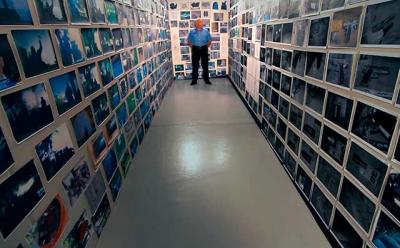Documentary Film About America’s Police Militarization

Scott Christopherson and Brad Barber were editing their film “Peace Officer,” a documentary about the militarization of America’s police forces, when, on Aug. 9, 2014, Michael Brown was killed by a policeman in Ferguson, Mo.
“We thought we were finished filming,” Mr. Barber recalled, “but Ferguson caused us to add one more shoot to the schedule. We thought it was important to talk to some experts to contextualize the problem, particularly to acknowledge how much more this happens in communities of color.”
“Peace Officer,” which will be shown at Guild Hall tomorrow at 7:30 p.m. as part of the Hamptons International Film Festival’s SummerDocs series, opens with rough, black-and-white footage of a SWAT team in action. The film cuts to William (Dub) Lawrence, a former marine, police officer, county commissioner, and sheriff who now makes his living repairing water and sewer pumps. Mr. Lawrence presents the details of the shooting we have just seen and his subsequent independent investigation.
Brian Wood, a fireman in Farmington, Utah — and Mr. Lawrence’s son-in-law — was killed outside his house in 2008 by a SWAT team from the Davis County Sheriff’s Office after a long standoff during which the only person Wood aimed a gun at was himself. It turns out Mr. Lawrence, who witnessed the incident, founded the local SWAT team in the 1970s after being elected Davis County sheriff at the age of 29.
The film follows his obsessive quest to bring to light the truth, not only behind his son-in-law’s shooting but also behind several other police raids in neighboring communities. Mr. Lawrence is a compelling, ingratiating figure whose determination to illuminate the militarization of America’s police forces is matched by the meticulousness of his investigations and the clarity of his explanations. The filmmakers discovered him and his story almost by chance.
“I knew Dub’s son,” said Mr. Christopherson. “I didn’t really know Dub, but he knew I was a documentary film professor, and he approached me to see if I would teach him how to edit. He showed me his own two-hour edit of his son-in-law’s shooting death with police footage and photographs, and I was blown away by the story, which I knew about but hadn’t followed too closely when it happened.”
While a law officer, Mr. Lawrence investigated 125 major felony cases and helped break the Ted Bundy case. His intention, in forming the Davis County SWAT team, was to use it to neutralize violent situations. At that time there were approximately 50 SWAT raids per year in the United States. By 2005 there were 50,000 such raids annually. The reason for the increase was not more crime, but increased police access to military weapons.
The 1033 program, created by the National Defense Authorization Act of fiscal year 1997, authorized the military to give equipment to police departments. While several spokespeople from law enforcement argue that SWAT teams aim to prevent violence, the film makes it clear that most of the no-knock raids, which are usually conducted at night, target nonviolent and consensual crimes such as taking or dealing drugs and give rise to the violence they are supposed to prevent.
One especially brutal incident, which led to an intense gun battle, targeted Matthew Stewart, whose crime was growing marijuana in his basement. Stewart was accused of killing a policeman during the raid, which was conducted at night by officers in plain clothes, but Mr. Lawrence’s detailed reconstruction of the incident casts doubt on the police version. Stewart hung himself in jail before his case could go to trial.
Alec Baldwin, the series host, will lead a post-screening discussion with the filmmakers. “Peace Officer” will have its theatrical release in New York City on Sept. 16, in Los Angeles on Sept. 18, and will be broadcast next May as part of the PBS series “Independent Lens.”
